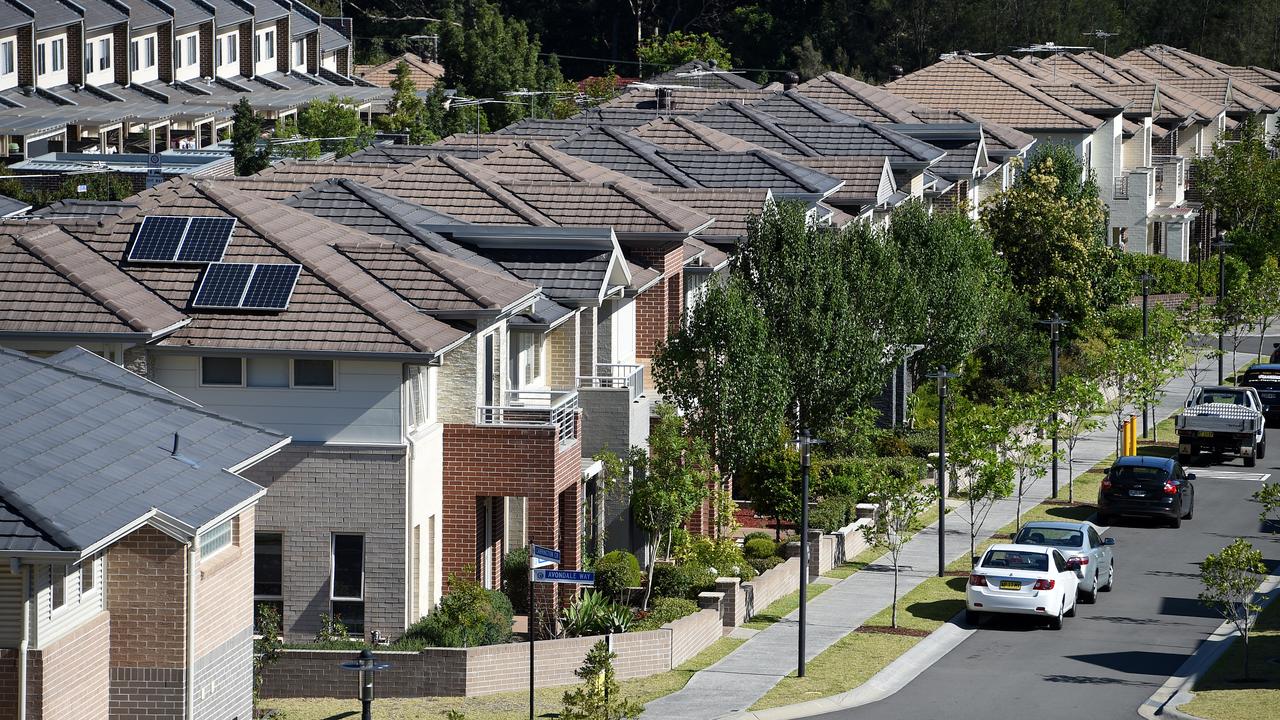Fears about rollover of interest-only loans in Australia
IN THE next three years Australians will have to start paying off higher amounts on their mortgages, sparking crisis fears.
FOR years a property boom in Australia has been partly fuelled by the growth of interest-only loans but this is coming to an end, sparking fears of a “nightmare scenario”.
In the next three years the Reserve Banks has estimated 200,000 home loans will roll over to principal-and-interest payments, bumping up mortgage repayments by about $7000 a year for the average borrower.
At the same time, changes to lending practices has made it more difficult for people to refinance their loans and delay increases to their repayments.
“The kind of nightmare scenario is where a lot of people need to sell all at once and that’s where you see a kind of fire-sale mentality … and it could lead to significant financial instability,” UNSW economist Professor Richard Holden told 7.30.
Interest-only loans have become popular in Australia, partly because of the country’s unique negative gearing provisions.
By 2015, interest-only loans made up almost 40 per cent of the country’s outstanding credit.
“This is unusual and the tax system in Australia drove it,” property analyst Pete Wargent told news.com.au. “In the UK, it would be less than half of that and in other parts of the world it is not as popular.”
Mr Wargent said a major driver of these loans was the ability to claim a tax deduction on the interest paid.
“It’s smart investing from a tax efficiency point of view but the issue is that so many people are doing it.”
Typically, an interest-only loan would automatically reset to higher principal-and-interest payments after five years but Mr Wargent said it had become popular for investors to roll their loans over to interest-only loans “in perpetuity”.

The federal government, Reserve Bank and Australian Prudential Regulation Authority became concerned about the growing popularity of these loans last year and decided to limit them. They can now only make up a maximum of 30 per cent of loans. They also encouraged lenders to make interest rates higher on these loans, and in some cases rates are about 1 per cent more expensive than on principal-and-interest loans.
Mr Wargent said crackdown appears to have been effective in getting people to switch to principal-and-interest loans early and in reducing the popularity of interest-only loans.
“In a short time, we’ve seen a sharp decline in interest-only loans and this will continue in 2018,” he said.
Mr Wargent had previously predicted the surge in interest-only loans would lead to a big surge in resets, peaking in 2020 but he doesn’t believe there will be a dramatic economic downturn due to the higher repayments.
“The Reserve Bank estimated people would pay an average $7000 more in mortgage repayments, and the question mark becomes what impact will this have on what people have to spend in the economy, on consumption. What could be the economic impact of that?”
Mr Wargent did not believe Australia was headed for a meltdown thanks to intervention from regulators.
He said more people were choosing to switch to principal-and-interest loans early (thanks to the lower interest rates on these products) and in recent years homeowners had also been increasing their repayments and starting to get ahead of their mortgages.
Statistics released yesterday showed a 4.2 per cent drop in housing prices in Sydney since the peak of July 2017 but overall prices across Australia were only 1 per cent lower.
ANZ Research senior economist Daniel Gradwell said its June update predicted a 10 per cent drop in prices in Sydney and Melbourne from their peak but this was mostly due to the availability of financing.
While the rollover of interest-only loans did feed into the overall tightening of the property market, Mr Gradwell told news.com.au it was not being seen as a big factor.
“We didn’t mention it explicitly yesterday (in the housing update) because in isolation we don’t think it’ll have a huge impact,” Mr Gradwell said. “For some individuals it may do, but not at the system level.”
Meanwhile, Mr Wargent believes there are still options the government has to soften any downturn if things become too hairy.
Some measures to cool the investor market have also come off, such as the cap on investor lending growth to no more than 10 per cent.
APRA will discontinue the cap — introduced in 2014 to cool markets in Sydney and Melbourne — on July 1 and this could see interest rates lowered on investment loans.
“If the housing market cools more than hoped for, you might see an easing back of other macroprudential measures,” Mr Wargent said.
“Things that have been used in the past include first homeowner grants and you might also see banks competing more on mortgage rates to try and stimulate activity again.
“I think tighter standards have had the desired effect — prices have stopped rising at breakneck speeds. But if they fall dramatically, they can take the foot off the brake a little bit.”
While this may save Australia’s economy from a dramatic downturn, homeowners unable to keep up with their mortgage costs may not be so lucky.
Hugh Mackey, 61, told 7.30 he will need to find an extra $12,000 a year to cover mortgages on his two properties, which have both halved in value.
“If (the bank) take that debt which they’re entitled to do, then basically we’ll end up with no assets and no cash,” he said.




